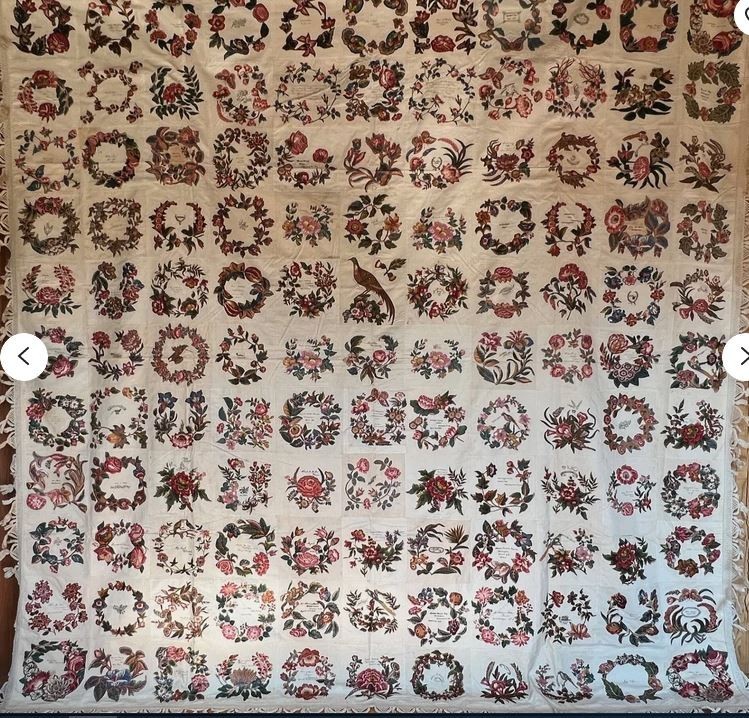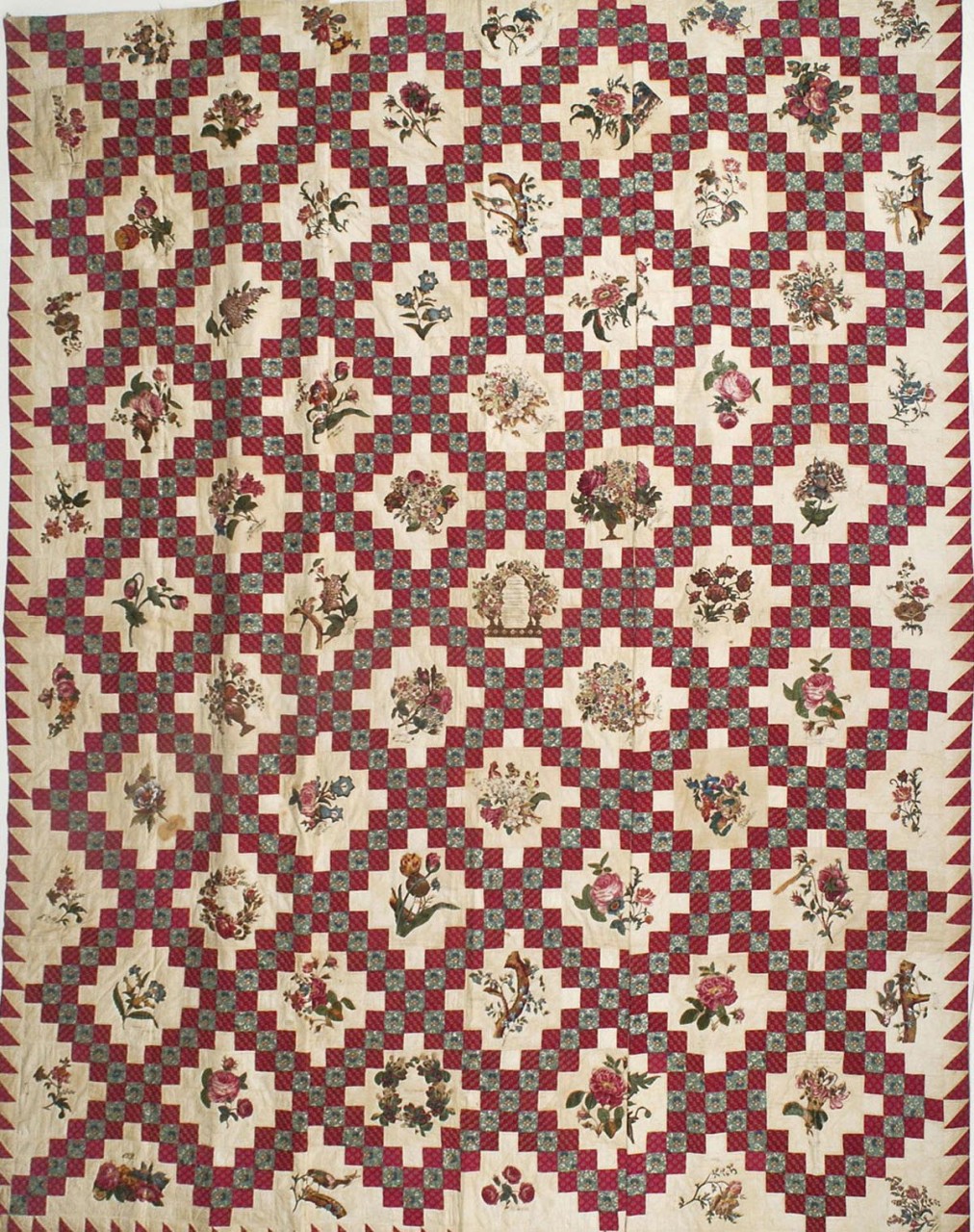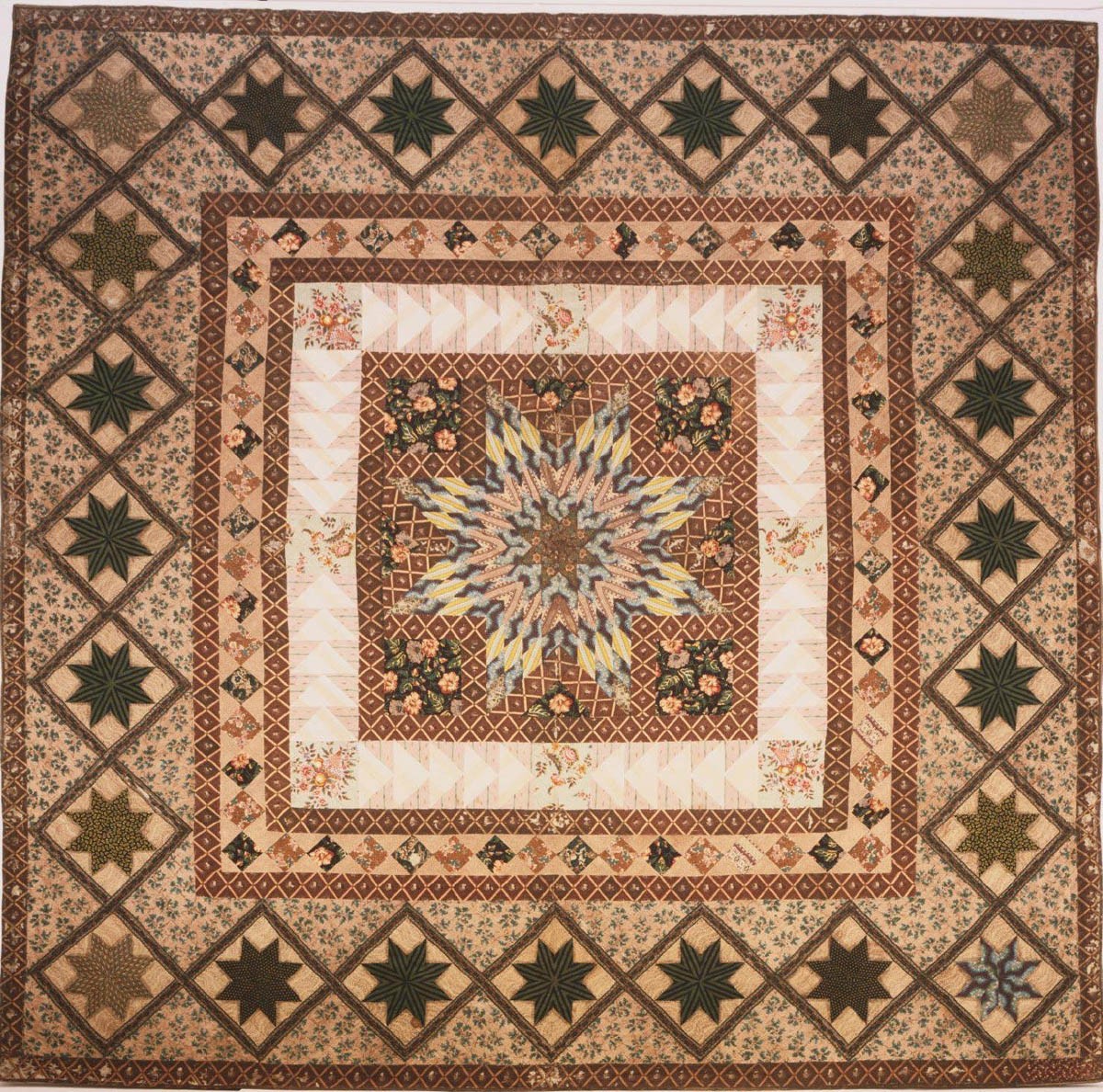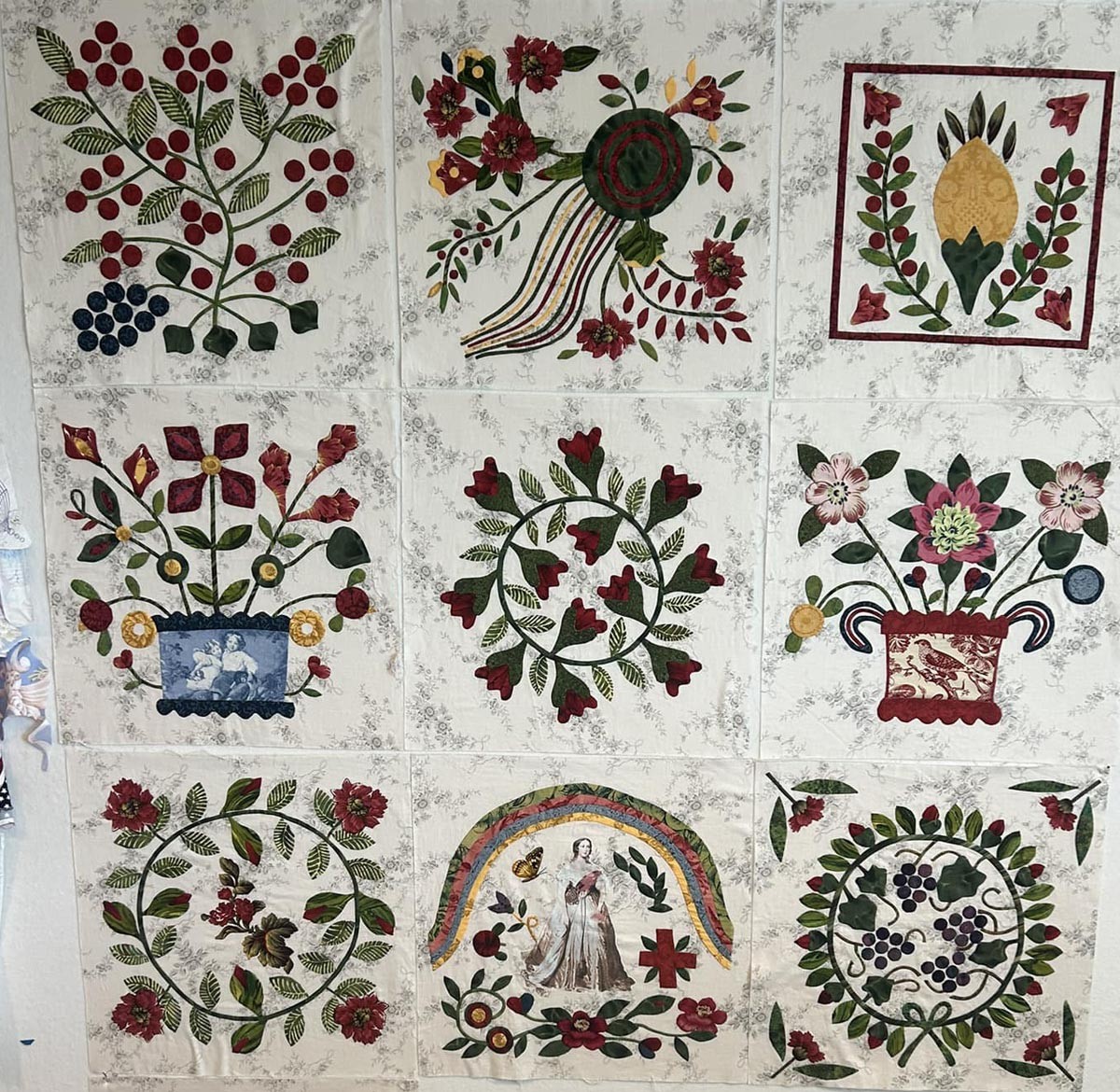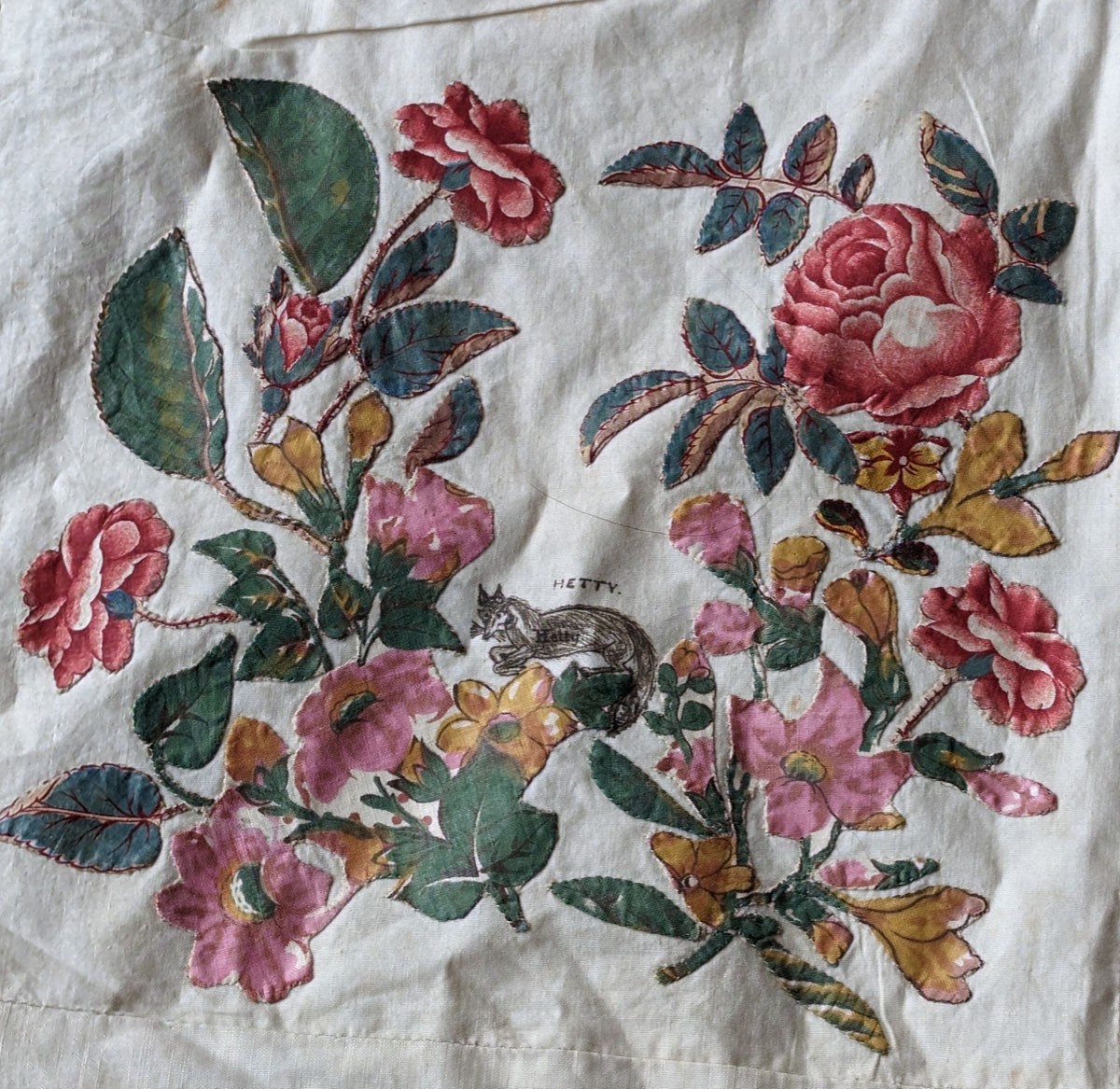
As we continue our research into the Northern Style Cut-out Applique Quilts (NSCA), we will examine the influence of the Taylor family. Since we have a working theory of an engagement quilt for the Machette/Taylor Coverlet 1840 in the Poos Collection, one of the primary inscriptions is of Hetty Coe Taylor. She also has potentially a second block on the quilt with a cute dog and the inscription “Hetty.” It seems likely to be another block for her, unless someone named their dog Hetty and she was included. (Ha!) Not counting the Hetty block as a separate Taylor, there are 12 different Taylors that appear on the coverlet. Hetty Coe Taylor and Edwin Vallette Machette were married on March 15, 1842 at St. Philips’ Protestant Episcopal Church. Surprisingly neither of Hetty Coe Taylor’s parents, Benjamin and...


